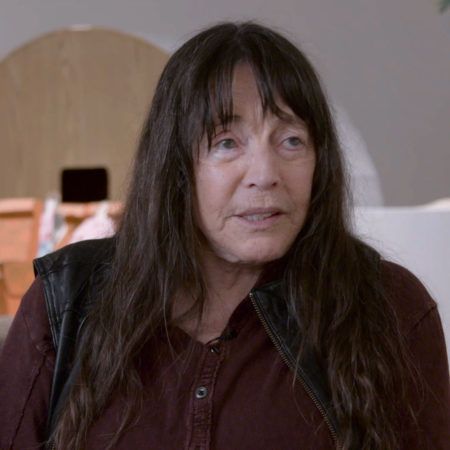Reseña
Eleanor Antin was born in New York in 1935. She is considered one of the most influential artists to emerge from the feminist art movement of the 1960s and 1970s and one of the most respected conceptual artists. Besides her work in photography, she has done performance art, cinema, video and installations. In her work, she reviews gender, class and race roles and reinterprets classical myths from a contemporary perspective. As a performance artist, she has participated in the Venice Biennale and in the Sydney Opera House. Her work is included in many relevant public collections, such as the Art Institute of Chicaco.
Justificaciones
- Multidisciplinary artist.
- She reviews gender, class and race roles.
- She interprets classical myths from a contemporary perspective.
Biografía
She was born in New York in 1935 and studied in the High School of Music & Art, where she specialised in painting, and in the City College. Her first formative works are framed, as expected, within abstract expressionism. From 1968 on, after arriving in San Diego, she embraced the new languages of conceptual art. As a conceptual artist, she does not need to define herself as a painter or sculptor or performer; she can be everything at once. Her first works focused on imaginary characters, versions of herself. With make-up, costumes, and acting, she establishes a complex game of identity changes which she uses to question certain stereotypes.
Eleanor Antin's most conceptual sculpture is shown in Carving: A Traditional Sculpture, a 1972 work consisting of 148 photographs of her body that capture her strict weight loss process during a month. In 2017, she revises this piece in Carving: 45 years later (2017) defying again artistic conventions and the beauty canon for women. Now, she does it as an old woman, being both critical and pessimistic.
In the last two decades, Eleanor Antin has turned her gaze to 19th century academicism, paintings by great masters of modern painting and the ancient, classical world, to give new meanings to the past and how it is projected throughout history and in the present. Using the history of Pompeii and classical allegories and mythology, she focuses on the role of women in history comparing it to the present day.
Today, as an 80-year-old artist, she is still one of the most relevant feminist artists in the world. She proves that the feminist perspective is valid and necessary to read art history. Her innovative practice spans five decades and has covered topics related to identity, gender, autobiography, class and social structures. Antin's multidisciplinary approach includes installation, painting, illustration, writing, and mostly photography and performance.
Trinidad, Emma (2021) “Eleanor Antin”. Womann Art House, (retrieved on 14/05/2021). <https://womanarthouse.wordpress.com/2021/04/02/eleanor-antin/>
Obras
Inglés
Español
Valenciano
- Conceptual works:
· Blood of a Poet Box (1965-1968)
· Molly Barnes (1969)
· 100 Boots (1971-1973)
- Photographs of his body:
· Carving: A Traditional Sculpture (1972)
· Carving: 45 Years Later (2017)
- Project Selves (four videos in which he embodied multiple alter egos ):
· The King (1972)
· The Ballerina and the Bum (1974)
· The Adventures of a Nurse (1976)
· From the Archives of Modern Art (1987).
- Films:
· The Angel of Mercy (1977)
· Vilna Nights (1993)
· Minetta Lane: A Ghost Story (1995)
· Music Lessons (1997).
- Large-format photograph of classical antiquity:
· The Last Days of Pompeii (2002)
· Roman Allegories (2005)
· Helen ‘s Odyssey (2007)
- Autobiographical novel
· Conversations with Stalin (2013)
Bibliografía
-Art21 (n.d.). Eleanor Antin, (retrieved on 14/05/2021), <https://art21.org/artist/eleanor-antin/>
-Fox, H., Butler, L. (1999). Eleanor Antin. Los Angeles: County Museum of Art
-Giner Ponce, Xavier (2019). El póster. XVIII Jornadas de la ELP, (retrieved on 14-05-2021). <https://discordia.jornadaselp.com/el-poster/>
- Richard Saltoun Gallery (2021). Eleanor Antin, (retrieved on 14-05-2021), <https://www.richardsaltoun.com/artists/235-eleanor-antin/biography/>
-Trinidad, Emma (2021). “Woman Art House: Eleanor Antin”, in Plataforma de Arte Contemporáneo, (retrieved on 09/05/2022), <https://www.plataformadeartecontemporaneo.com/pac/woman-art-house-eleanor-antin>
Enfoque Didáctico
-CUC: Block Continuity of cultural heritage. Mythology and religion.
-Latin 4th ESO: Block Legacy and heritage.
(In the previous subjects, photographic works related to classical mythology may be used.)
-History of Art 2nd Baccalaureate: the whole of his work can be dealt with.
Documentos
